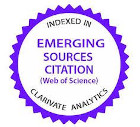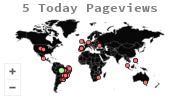Inovação na pequena empresa: um olhar a partir dos microfundamnetos das capacidades dinâmicas
DOI:
https://doi.org/10.23925/2178-0080.2024v26i1.62611Palabras clave:
Capacidade de Inovação, Microfundamentos, Pequena Empresa, GestorResumen
Este ensaio objetivou discutir a inovação na pequena empresa a partir dos microfundamentos das capacidades dinâmicas. Foi utilizada abordagem ensaística, que permite provocar reflexões sobre o tema. Adotou-se que os aspectos cognitivos e as habilidades específicas dos gestores podem influenciar a capacidade de inovação da pequena empresa, já que eles são os porta-vozes da inovação e suas ações individuais são aspectos antecedentes de cada capacidade dinâmica, que são os fatores que levam à inovação. Como contribuição, o ensaio propõe sobre como os microfundamentos podem ser explorados para compreender a inovação no contexto da pequena empresa e traz como proposição que as características cognitivas e interpessoais do gestor são a base dos microfundamentos das capacidades dinâmicas na pequena empresa.
Citas
Aguinis, H., & Molina-Azorín, J. F. (2015). Using multilevel modeling and mixed methods to make theoretical progress in microfoundations for strategy research. Strategic Organization, 13(4), 353-364.
Aliasghar, O., Sadeghi, A., & Rose, E. L. (2020). Process innovation in small-and medium-sized enterprises: The critical roles of external knowledge sourcing and absorptive capacity. Journal of Small Business Management, 1-28.
Barkhatov, V., Pletnev, D., & Campa, A. (2016). Key success factors and barriers for small businesses: Comparative analysis. Procedia-Social and Behavioral Sciences, 221(7), 29.
Barnard, C. I. (1968). The functions of the executive (Vol. 11). Harvard university press.
Barney, J. A. Y., & Felin, T. (2013). What are microfoundations? Academy of Management Perspectives, 27(2), 138-155.
Barros, I., Hernangómez, J., & Martin-Cruz, N. (2016). A theoretical model of strategic management of family firms. A dynamic capabilities approach. Journal of Family Business Strategy, 7(3), 149-159.
Bianchi, C., & Stoian, M. C. (2022). Exploring the role of managerial and organizational capabilities for the inbound internationalization of small and medium-sized enterprises. Journal of Small Business Management, 1-39.
Bittar, A. D. V., Di Serio, L. C., & Vasconcellos, M. A. D. (2018). Micro e Pequenas Empresas Inovadoras: Evidências em Empresas Paulistanas. Revista de Empreendedorismo e Gestão de Pequenas Empresas, 7(3), 01-31.
Blackburn, R. A., Hart, M., & Wainwright, T. (2013). Small business performance: business, strategyandowner‐manager characteristics. JournalofSmall Business and Enterprise Development, 20(1), 8-27.
Breznik, L., & Hisrich, R. D. (2014). Dynamic capabilities vs. innovation capability: are they related? Journal of Small Business and Enterprise Development.
Broekaert, W., Andries, P., & Debackere, K. (2016). Innovation processes in family firms: the relevance of organizational flexibility. Small Business Economics, 47, 771-785.
Bruno-Faria, M. D. F., & Fonseca, M. V. D. A. (2014). Cultura de inovação: conceitos e modelos teóricos. Revista de Administração Contemporânea, 18(4), 372-396.
Bulgacov, S., & Bulgacov, Y. L. M. (2007). A construção do significado nas organizações. Revista de Administração FACES Journal, 6(3).
Coda, R., Krakauer, P. V., & Berne, D. (2018). Are small business owners entrepreneurs? Exploring small business manager behavioral profiles in the São Paulo Metropolitan region. RAUSP Management Journal, 53(2), 152-163.
Corvello, V., Straffalaci, V., & Filice, L. (2022). Small business antifragility: how research and innovation can help survive crises and thrive. International Journal of Entrepreneurship and Innovation Management, 26(3-4), 252-268.
Crossan, M. M., & Apaydin, M. (2010). A multi‐dimensional framework of organizational innovation: A systematic review of the literature. Journal of management studies, 47(6).
Dalongaro, R. C., Envall, M. F., Souto, A. J. P., & Assmann, R. D. C. L. M. (2015). Inovação no Modelo de Gestão para a Micro e Pequena Empresa. Revista GESTO, 2(2), 50-59.
De Jong, J. P., & Marsili, O. (2006). The fruit flies of innovations: A taxonomy of innovative small firms. Research Policy, 35(2), 213-229.
Demirbas, D., Hussain, J. G., & Matlay, H. (2011). Owner‐managers' perceptions of barriers to innovation: empirical evidence from Turkish SMEs. Journal of Small Business and Enterprise Development, 18(4), 764-780
Dunne, T. C., Aaron, J. R., McDowell, W. C., Urban, D. J., & Geho, P. R. (2016). The impact of leadership on small business innovativeness. Journal of Business Research, 69(11).
Eisenhardt, K. M., & Martin, J. A. (2000). Dynamic capabilities: what are they? Strategic management journal, 21(10‐11), 1105-1121.
Felin, T., Foss, N. J., & Ployhart, R. E. (2015). The microfoundations movement in strategy and organization theory. The Academy of Management Annals, 9(1), 575-632.
Forsman, H. (2011). Innovation capacity and innovation development in small enterprises. A comparison between the manufacturing and service sectors. Research Policy, 40(5), 739.
Freixanet, J., Rialp, A., & Churakova, I. (2020). How do innovation, internationalization, and organizational learning interact and co-evolve in small firms? A complex systems approach. Journal of Small Business Management, 58(5), 1030-1063.
Froehlich, C., Bitencourt, C. C., & Bossle, M. B. (2017). The use of dynamic capabilities to boost innovation in a Brazilian Chemical Company. Revista de Administração (São Paulo), 52(4), 479-491.
Gardet, E., & Fraiha, S. (2012). Coordination modes established by the hub firm of an innovation network: The case of an SME bearer. Journal of Small Business Management, 50(2), 216-238.
Gianiodis, P., Lee, S. H., Zhao, H., Foo, M. D., & Audretsch, D. (2022). Lessons on small business resilience. Journal of Small Business Management, 60(5), 1029-1040.
Gibb, A., & Davies, L. (1990). In pursuit of frameworks for the development of growth models of the small business. International Small Business Journal, 9(1), 15-31.
Guenther, C., Belitski, M., & Rejeb, N. (2023). Overcoming the ability-willingness paradox in small family firms’ collaborations. Small Business Economics, 60(4), 1409-1429.
Helfat, C. E., & Peteraf, M. A. (2015). Managerial cognitive capabilities and the microfoundations of dynamic capabilities. Strategic Management Journal, 36(6), 831.
Helfat, C. E., & Winter, S. G. (2011). Untangling dynamic and operational capabilities: Strategy for the (N) ever‐changing world. Strategic Management Journal, 32(11), 1243-1250.
Henrekson, M. (2014). Entrepreneurship, innovation, and human flourishing. Small Business Economics, 43(3), 511-528.
Hirsch‐Kreinsen, H. (2008). “Low‐tech” innovations. Industry and Innovation, 15(1), 19-43.
Hirsch‐Kreinsen, H., Jacobson, D., & Robertson, P. L. (2006). ‘Low‐tech’Industries: Innovativeness and Development Perspectives—A Summary of a European Research Project. Prometheus, 24(1), 3-21.
Huarng, K. H., & Ribeiro-Soriano, D. E. (2014). Developmental management: Theories, methods, and applications in entrepreneurship, innovation, and sensemaking. Journal of Business Research, 67(5), 657-662.
Iftikhar, M. N., Justice, J. B., & Audretsch, D. B. (2022). The knowledge spillover theory of entrepreneurship: An Asian perspective. Small Business Economics, 1-26.
Jensen, M. B., Johnson, B., Lorenz, E., &Lundvall, B. A. (2007). Forms of knowledge and modes of innovation. The Learning Economy and the Economics of Hope, 155.
Kemboi, A. K., & Tarus, D. K. (2021). Does metacognition drive innovation? The case of entrepreneurial firms in Kenya. International Journal of Entrepreneurial Venturing, 13(6), 549-567.
Kozan, M. K., Oksoy, D., &Ozsoy, O. (2012). Owner sacrifice and small business growth. Journal of World Business, 47(3), 409-419.
Lee, S., Park, G., Yoon, B., & Park, J. (2010). Open innovation in SMEs: An intermediated network model. Research Policy, 39(2), 290-300.
Lei Complementar Nº 123 (2006). Lei geral da micro e pequena empresa. Disponível em: <http://www.planalto.gov.br/ccivil_03/leis/LCP/Lcp123.htm>. Acessoem: 17, jul. 2019.
Lima, J. F., & Silva, G. (2019). Desafios para Inovar na Micro e Pequena Empresa. Revista da Micro e Pequena Empresa, 13(2), 85-97.
Lundvall, B. Å. (2016). The learning economy and the economics of hope. Anthem Press.
McClelland, D. C. (1972). A sociedade competitiva realização e progresso social. Expressão e Cultura.
Meirelles, D. S., & Camargo, Á. A. B. (2014). Capacidades dinâmicas: O que são e como identificá-las? Revista de Administração Contemporânea, 18(SPE), 41-64.
Meneghetti, F. K. (2011). O que é um ensaio-teórico? Revista de Administração Contemporânea, 15(2), 320-332.
Moraes, C., Philippsen Jr, L., Lirani, H., Yamanaka, L., Rosim, D., & Escrivão Filho, E. (2014). Systematic mapping study in small business: the quest for contemporary understanding. Procedia-Social and Behavioral Sciences, 143, 916-920.
OCDE/Eurostat (2018), Oslo Manual 2018: Guidelines for Collecting, ReportingandUsing Data onInnovation, 4th Edition, The MeasurementofScientific, TechnologicalandInnovationActivities, OECD Publishing, Paris/Eurostat, Luxembourg.
Parmigiani, A., & Howard-Grenville, J. (2011). Routines revisited: Exploring the capabilities and practice perspectives. Academy of Management Annals, 5(1), 413-453.
Poutziouris, P. (2003). The strategic orientation of owner‐managers of small ventures. International Journal of Entrepreneurial Behavior & Research, 9(5), 185-214.
Romero, I., & Martínez-Román, J. A. (2012). Self-employment and innovation. Exploring the determinants of innovative behavior in small businesses. Research Policy, 41(1), 178.
Rothwell, R. (1989). Small firms, innovation and industrial change. Small Business Economics, 1(1), 51-64.
Salvato, C., & Rerup, C. (2011). Beyond collective entities: Multilevel research on organizational routines and capabilities. Journal of Management, 37(2), 468-490.
Schumpeter, J. A. (1982). Teoria do desenvolvimento econômico: uma investigação sobre lucros, capital, crédito, juro e o ciclo econômico. São Paulo: Abril Cultural, 1982. Capitalismo, Socialismo e Democracia. Investimento, regulação e mercado.
Saunila, M. (2020). Innovation capability in SMEs: A systematic review of the literature. Journal of Innovation & Knowledge, 5(4), 260-265.
SEBRAE. (2022). Panorama do Emprego nas MPEs. Disponível em: <https://datasebrae.com.br/panorama-do-emprego/>. Acesso: 30 jun. 2023.
Silva, G., Dacorso, A. L. R., & Montenegro, L. M. (2016). Mais do que negócios abertos, mentes abertas. Revista de Empreendedorismo e Gestão de Pequenas Empresas, 5(2), 03.
Suddaby, R., Coraiola, D., Harvey, C., & Foster, W. (2020). History and the micro‐foundations of dynamic capabilities. Strategic Management Journal, 41(3), 530-556.
Sun, L., Lee, I. H., & Hong, E. (2017). Does foreign direct investment stimulate new firm creation? In search of spillovers through industrial and geographical linkages. Small Business Economics, 48, 613-631.
Taneja, S., Pryor, M. G., & Hayek, M. (2016). Leaping innovation barriers to small business longevity. Journal of Business Strategy, 37(3), 44-51.
Teece, D. J., Pisano, G., & Shuen, A. (1997). Dynamic capabilities and strategic management. Strategic management journal, 18(7), 509-533.
Teece, D. J. (2007). Explicating dynamic capabilities: the nature and microfoundations of (sustainable) enterprise performance. Strategic Management Journal, 28(13), 1319-1350.
Tidd, J., & Bessant, J. (2015). Gestão da inovação. 5 ed. Bookman Editora.
Tunzelmann, N., & Acha, V. (2005). Innovation in “low-tech” industries. In The Oxford handbook of innovation.
Urrutia-Badillo, Y., Lopez-Cabrales, A., & Valle Cabrera, R. (2018). A multidimensional approach to the content of human capital: Dimensions, emergence process and organizational capabilities. Management Research: Journal of the Iberoamerican Academy of Management, 16(2), 138-158.
Van de Vrande, V., De Jong, J. P., Vanhaverbeke, W., & De Rochemont, M. (2009). Open innovation in SMEs: Trends, motives and management challenges. Technovation, 29(6-7), 423-437.
Verdu, F. C., &Bulgacov, S. (2012). A internacionalização de uma pequena empresa. REBRAE, 5(2), 179-190.
Wang, C. L., & Ahmed, P. K. (2007). Dynamic capabilities: A review and research agenda. International Journal of Management Reviews, 9(1), 31-51.
World Bank. (2023). Small and Medium Enterprises (SMEs) Finance. Disponível em: <https://www.worldbank.org/en/topic/smefinance>. Acesso: 30 jun. 2023.
Zaridis, A. D., & Mousiolis, D. T. (2014). Entrepreneurship and SME's organizational structure. Elements of a successful business. Procedia-social and Behavioral Sciences, 148, 463.
Zollo, M., & Winter, S. G. (2002). Deliberate learning and the evolution of dynamic capabilities. Organization Science, 13(3), 339-351.
Descargas
Publicado
Cómo citar
Número
Sección
Licencia
Derechos de autor 2024 Lucas Gabriel Bezerra Lima, Glessia Silva

Esta obra está bajo una licencia internacional Creative Commons Atribución 4.0.

Este obra está licenciado com uma Licença Creative Commons Atribuição 4.0 Internacional.







